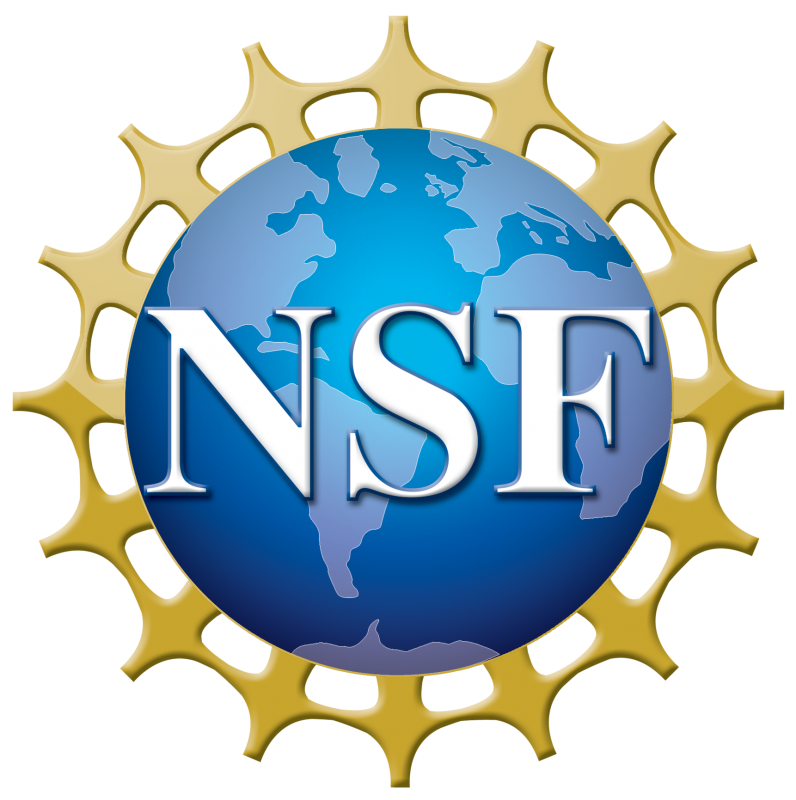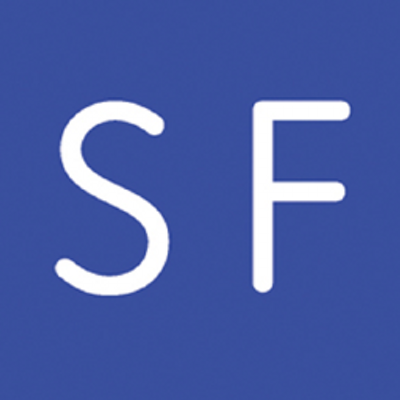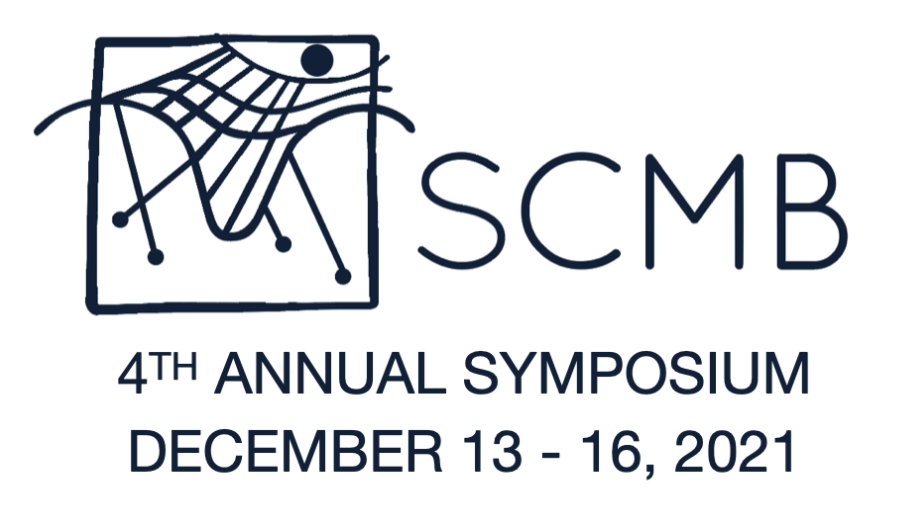 The 4th SCMB Annual Symposium ran from December 13th - 16th, 2021 as a free online event with the goal of elevating the the ongoing dialogue at the interface of Mathematics and Biology. Focused on traineeship at the math-bio interface, the symposium hosted daily panels on relevant issues to early-career math-bio researchers. Invited talks from junior researchers representing all four NSF-Simons MathBioSys Research Centers shared compelling success stories of mathematical theory meeting biosystems data. The final day of the Symposium hosted plenary lecture "Forward and Reverse modeling to make the most of 'tiny data' in systems bio-medicie" by Belinda Akpa (ONRL; UTK). Following the plenary, the Symposium hosted a virtual poster session on spatial conferencing platform Spatial.Chat. Poster presenters also contributed 90 second "microtalks" to advertise their work in an accessible format, which are compiled in the YouTube reel below. Scroll below to see highlights of the talks, panels, and informal moments from this event.
The 4th SCMB Annual Symposium ran from December 13th - 16th, 2021 as a free online event with the goal of elevating the the ongoing dialogue at the interface of Mathematics and Biology. Focused on traineeship at the math-bio interface, the symposium hosted daily panels on relevant issues to early-career math-bio researchers. Invited talks from junior researchers representing all four NSF-Simons MathBioSys Research Centers shared compelling success stories of mathematical theory meeting biosystems data. The final day of the Symposium hosted plenary lecture "Forward and Reverse modeling to make the most of 'tiny data' in systems bio-medicie" by Belinda Akpa (ONRL; UTK). Following the plenary, the Symposium hosted a virtual poster session on spatial conferencing platform Spatial.Chat. Poster presenters also contributed 90 second "microtalks" to advertise their work in an accessible format, which are compiled in the YouTube reel below. Scroll below to see highlights of the talks, panels, and informal moments from this event.
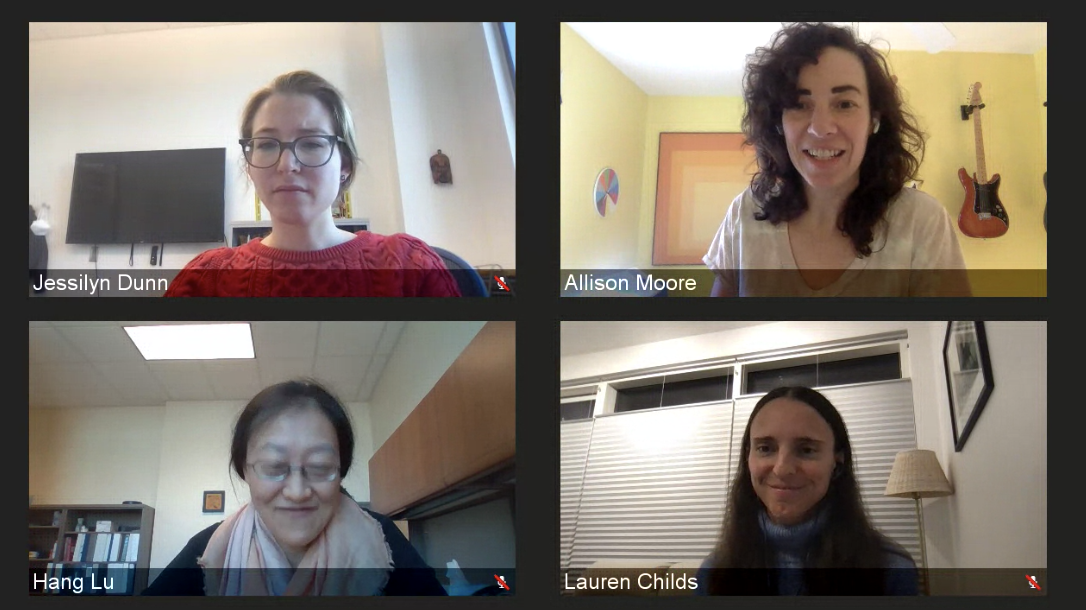
SCMB Associate Director Hang Lu discusses the highly non-linear paths that led our three panelists— Jessilyn Dunn (Duke), Lauren Childs (VT), and Allison Moore (VCU)—to research careers at the math-bio interface in Tuesday's panel discussion "The meandering road towards each other: how math finds bio (and vice versa)."
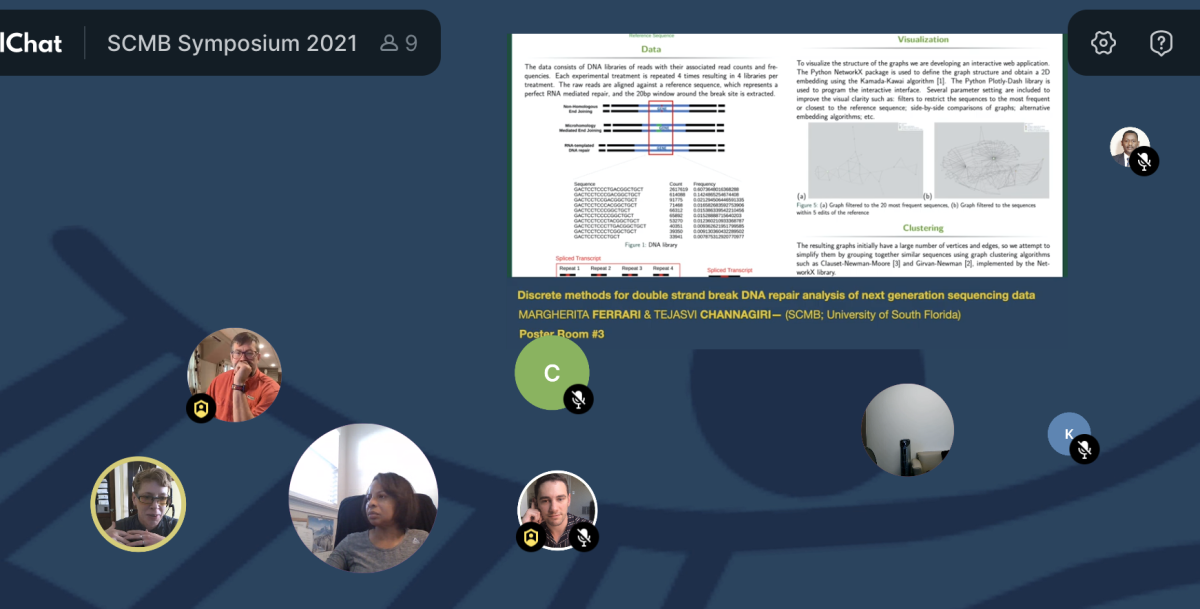
Folks gather to watch the reel of 90 second "microtalks" submitted by poster presenters during Monday's coffee break.
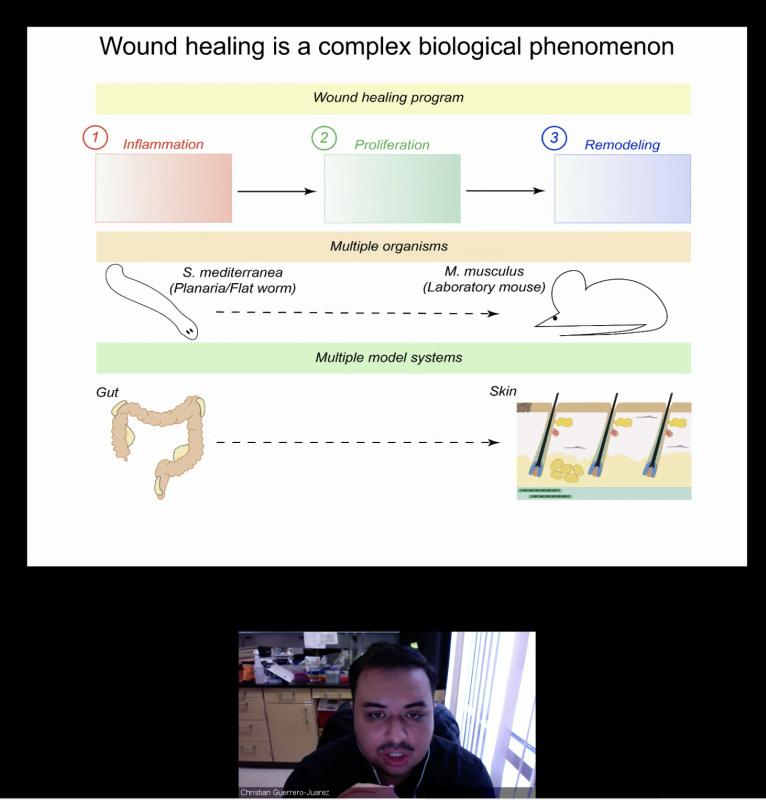
Christian Guerrero-Juárez (UCI) discusses wound healing in his talk "Multimodal analysis of skin regeneration."
Christian's talk was one of three talks invited to the Symposium from SCMB's fellow NSF-Simons MathBioSys research centers. Asja Radja represented the center at Harvard and Simon L. Freedman (Northwestern) represented CQuB.
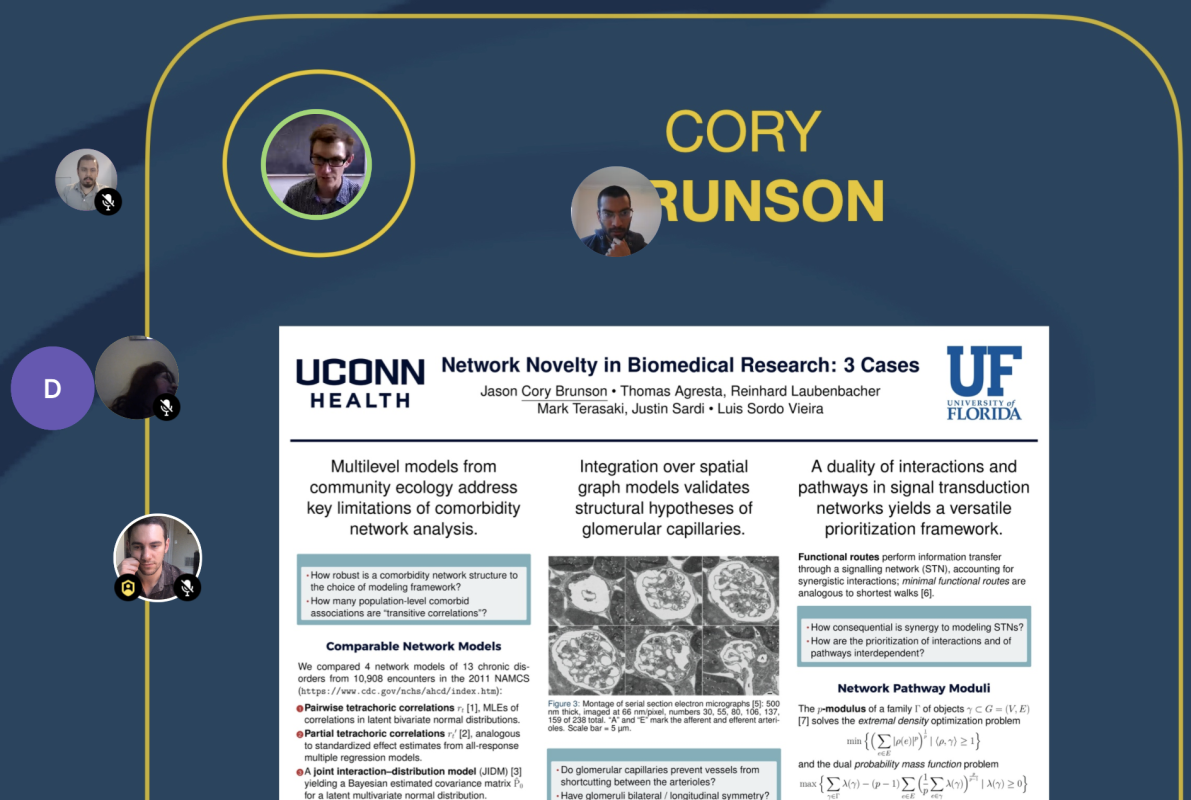
Cory Brunson (UF) draws a crowd during the poster session in Spatial.chat.

